Photographs: Reuters
Finance Minister Pranab Mukherjee presented the Union Budget 2010-11 in parliament on Monday.
Has he lived up to the expectations of the taxpayers?Is it a populist Budget? Will it also help India to grow? To find out read on..
Highlights. . .
Direct Taxes
- Exemption limit for the general category of individual taxpayers enhanced from
- Rs 1,60,000 to Rs 1,80,000 giving uniform tax relief of Rs 2,000.
- Exemption limit enhanced and qualifying age reduced for senior citizens.
- Exemption limit for Very Senior Citizens, who are 80 years raised to Rs 500,000.
- Current surcharge of 7.5 per cent on domestic companies proposed to be reduced
- to 5 per cent.
- Rate of Minimum Alternative Tax proposed to be increased from 18 per cent to
- 18.5 per cent of book profits.
- Tax incentives extended to attract foreign funds for financing of infrastructure.
- Additional deduction of Rs 20,000 for investment in long-term infrastructure bonds
- proposed to be extended for one more year.
- Lower rate of 15 per cent tax on dividends received by an Indian company from
- its foreign subsidiary.
- Benefit of investment linked deduction extended to businesses engaged in the
- production of fertilisers.
- Investment linked deduction to businesses developing affordable housing.
- Weighted deduction on payments made to National Laboratories, Universities
- and Institutes of Technology to be enhanced to 200 per cent.
- System of collection of information from foreign tax jurisdictions to be
- strengthened.
- A net revenue loss of Rs 11,500 crore (Rs 115 billion) estimated as a result of proposals.
- Indirect Taxes
- To stay on course for transition to GST.
- Central Excise Duty to be maintained at standard rate of 10 per cent.
- Reduction in number of exemptions in Central Excise rate structure.
- Nominal Central Excise Duty of 1 per cent imposed on 130 items entering in the
- tax net.
- Lower rate of Central Excise Duty enhanced from 4 per cent to 5 per cent.
- Optional levy on branded garments or made up proposed to be converted into a
- mandatory levy at unified rate of 10 per cent.
- Peak rate of Custom Duty held at its current level.13
. . .
Here's what the FM has proposed!
Image: A farmer works inside a sugarcane field at Moynaguri village near Siliguri.Photographs: Rupak De Chowdhuri/Reuters
Agriculture and Related Sectors
- Scope of exemptions from Excise Duty enlarged to include equipments needed for storage and warehouse facilities on agricultural produce.
- Basic Custom Duty reduced for specified agricultural machinery from 5 per cent to 2.5 per cent.
- Basic Custom Duty reduced on micro-irrigation equipment from 7.5 per cent to 5 per cent.
- De-oiled rice bran cake to be fully exempted from basic Custom Duty.
- Export Duty of 10 per cent to be levied on its export.
Black Money
- Five fold strategy to be put into operation to deal with the problem of generation and circulation of black money.
- Membership of various international fora engaged in anti money laundering, financial integrity and economic development, Exchange of information for tax purposes and transparency, secured.
- Various Tax Information Exchange Agreements and Double Taxation Avoidance Agreements concluded. Foreign Tax Division of CBDT has been strengthened to effectively handle increase in tax information exchange and transfer pricing issues.
- Enforcement Directorate strengthened three fold to handle increased number of cases registered under amended Money Laundering Legislation.
- Finance Ministry has commissioned study on unaccounted income and wealth held within and outside the country.
- Comprehensive national policy to be announced in near future to strengthen controls over prevention of trafficking on narcotic drugs.
. . .
Budget: Here's what the FM has proposed!
Manufacturing Sector
- Basic Custom Duty reduced for various items to encourage domestic value addition vis- -vis imports, to remove duty inversion and anomalies and to provide a level playing field to the domestic industry.
- Rate of Export Duty for all types of iron ore enhanced and unified at 20 per cent ad valorem. Full exemption from Export Duty to iron ore pellets.
- Basic Custom Duty on two critical raw materials of cement industry viz. petcoke and gypsum is proposed to be reduced to 2.5 per cent.
- Cash dispensers fully exempt from basic Customs Duty.
Budget: Here's what the FM has proposed!
Environment
- Full exemption from basic Customs Duty and a concessional rate of Central Excise Duty extended to batteries imported by manufacturers of electrical vehicles.
- Concessional Excise Duty of 10 per cent to vehicles based on Fuel cell technology.
- Exemption granted from basic custom duty and special CVD to critical parts/assemblies needed for Hybrid vehicles.
- Reduction in Excise Duty on kits used for conversion of fossil fuel vehicles into hybrid vehicles.
- Excise Duty on LEDs reduced to 5 per cent and special CVD being fully exempted.
- Basic Customs Duty on solar lantern reduced from 10 to 5 per cent.
- Full exemption from basic Customs Duty to Crude Palm Stearin used in manufacture of laundry soap.
- Full exemption from basic Excise Duty granted to enzyme based preparation for pre-tanning.
Budget: Here's what the FM has proposed!
Image: Labourers work at a flyover undergoing construction in the southern Indian city of Hyderabad.Photographs: Krishnendu Halder/Reuters
Infrastructure
- Parallel Excise Duty exemption for domestic suppliers producing capital goods needed for expansion of existing mega or ultra mega power projects.
- Full exemption from basic Customs Duty to bio-asphalt and specified machineryfor application in the construction of national highways.
Other Proposals
- Scope of exemptions from basic Customs Duty for work of art and antiquities extended to apply for exhibition or display in private art galleries open to the general public.
- Exemption from Import Duty for spares and capital goods required for ship repairunits extended to import by ship owners.
- Concessional basic Custom Duty of 5 per cent and CVD of 5 per cent available to newspaper establishments for high speed printing presses extended to mailroom equipment.
- Jumbo rolls of cinematographic film fully exempted from CVD by providing full exemption from Excise Duty.
- Outright concession to factory-built ambulances from Excise Duty.
- Relief measures proposed for raw pistachio, bamboo for agarbatti, lactose for the manufacture of homoeopathic medicines, sanitary napkins, baby and adult diapers.
- Proposals relating to Customs and Central Excise estimated to result in a net revenue gain of Rs 7,300 crore (Rs 73 billion).
Budget: Here's what the FM has proposed!
Service Tax
- Standard rate of Service Tax retained at 10 per cent, while seeking a closer fit between present regime and its GST successor.
- Hotel accommodation in excess of ` 1,000 per day and service provided by air conditioned restaurants that have license to serve liquor added as new services for levying Service Tax.
- Tax on all services provided by hospitals with 25 or more beds with facility of central air conditioning.
- Service Tax on air travel both domestic and international raised.
- Services provided by life insurance companies in the area of investment and some more legal services proposed to be brought into tax net.
- All individual and sole proprietor tax payers with a turn over upto Rs 60 lakhs (Rs 6 million) freed from the formalities of audit.
- To encourage voluntary compliance the penal provision for Service Tax are being rationalised.
- Similar changes being carried out in Central Excise and Custom laws.
- Proposals relating to Service Tax estimated to result in net revenue gain of Rs 4,000 crore (Rs 40 billion).
- Proposals relating to Direct Taxes estimated to result in a revenue loss of Rs 11,500 crore (Rs 115 billion) and those related to Indirect Taxes estimated to result in net revenue gain of Rs 11,300 crore (Rs 113 billion).
. . .
Budget: Here's what the FM has proposed!
Image: A farmer.Photographs: Reuters
OPPORTUNITIES
- Swift and broad based growth in 2010-11 has put the economy back to its
- pre-crisis growth trajectory. Fiscal consolidation has been impressive.
- Significant progress in critical institutional reforms that would set the pace for
- double-digit growth in the near future.
Dynamism in the rural economy due to scaled up flow of resources to the - rural areas.
CHALLENGES
- Structural concerns on inflation management to be addressed by improving supply response of agriculture to the expanding domestic demand and through stronger fiscal consolidation.
- Implementation gaps, leakages from public programmes and the quality of outcomes pose a serious challenge.
- Impression of drift in governance and gap in public accountability is misplaced.
- Corruption as a problem to be fought collectively.
Government to improve the regulatory standards and administrative practices. - Inputs from colleagues on both sides of House are important in the wider national
- interest.
- Budget 2011-12 to serve as a transition towards a more transparent and result oriented economic management system in India.
. . .
Budget: Here's what the FM has proposed!
Image: Pranab Mukherjee.Photographs: Reuters
OVERVIEW OF THE ECONOMY
- Gross domestic product estimated to have grown at 8.6 per cent in 2010-11 in real terms.
- Economy has shown remarkable resilience.
- Continued high food prices have been principal concern this year.
- Consumers denied the benefit of seasonal fall in prices despite improved availability of food items, revealing shortcomings in distribution and marketing systems.
- Monetary policy measures taken expected to further moderate inflation in coming months.
- Exports have grown by 29.4 per cent, while imports have recorded a growth of 17.6 per cent during April to January 2010-11 over the corresponding period last year.
- Indian economy expected to grow at 9 per cent with an outside band of +/- 0.25
- per cent in 2011-12.
- Average inflation expected lower next year and current account deficit smaller.
SUSTAINING GROWTH
- Fiscal consolidation
- Fiscal consolidation targets at Centre and States have shown positive effect on
- macro economic management of the economy.
- Amendment to Centre's FRBM Act, 2003 laying down the fiscal road map for
- the next five years to be introduced in the course of the year.
- Proposal to introduce the Public Debt Management Agency of India Bill in the
- next financial year.
. . .
Budget: Here's what the FM has proposed!
Tax Reforms
- Direct Taxes Code to be finalised for enactment during 2011-12.
DTC proposed to be effective from April 1, 2012. - Areas of divergence with States on proposed Goods and Services Tax have been narrowed.
- As a step towards roll out of GST, Constitution Amendment Bill proposed to be introduced in this session of Parliament.
- Significant progress in establishing GST Network, which will serve as
- IT infrastructure for introduction of GST.
Expenditure Reforms
- A Committee already set up by Planning Commission to look into the extant classification of public expenditure between plan, non-plan, revenue and capital.
Subsidies
- Nutrient Based Subsidy has improved the availability of fertiliser; government actively considering extension of the NBS regime to cover urea.
- Government to move towards direct transfer of cash subsidy to people living below poverty line in a phased manner for better delivery of kerosene, LPG and fertilisers.
Task force set up to work out the modalities for the proposed system.
People's ownership of PSUs
- Overwhelming response to public issues of Central Public Sector Undertakings during current year.
- Higher than anticipated non-tax revenue has led to reschedulement of some disinvestment issues planned for current year.
- Rs 40,000 crore (Rs 400 billion) to be raised through disinvestment in 2011-12.
- Government committed to retain at least 51 per cent ownership and management control of the Central Public Sector Undertakings.
. . .
Budget: Here's what the FM has proposed!
Image: NREGA workers.Investment Environment
- Discussions underway to further liberalise the foreign direct investment policy.
Foreign Institutional Investors
- Securities and Exchange Board of India registered mutual funds permitted to accept subscription from foreign investors who meet KYC requirements for equity schemes.
- To enhance flow of funds to infrastructure sector, the FII limit for investment in corporate bonds issued in infrastructure sector being raised.
Financial Sector Legislative Initiatives
- To take the process of financial sector reforms further, various legislations proposed in 2011-12.
- Amendments proposed to the Banking Regulation Act in the context of additional banking licences to private sector players.
Public Sector Bank Capitalisation
- Rs 6,000 crore (Rs 60 billion) to be provided during 2011-12 to enable public sector banks to maintain a minimum of Tier I CRAR of 8 per cent.
Recapitalisation of Regional Rural Banks
- Rs 500 crore (Rs 5 billion) to be provided to enable Regional Rural Banks to maintain a CRAR of at least 9 per cent as on March 31, 2012.
. . .



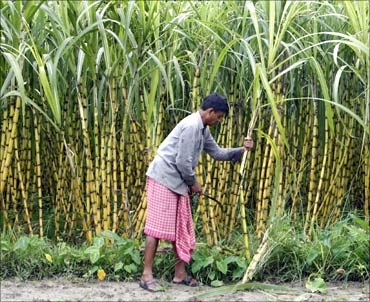
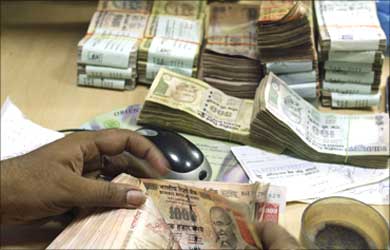



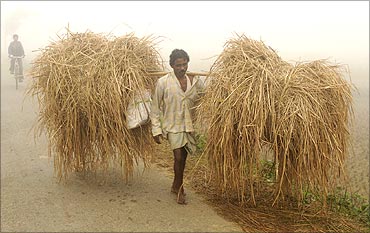
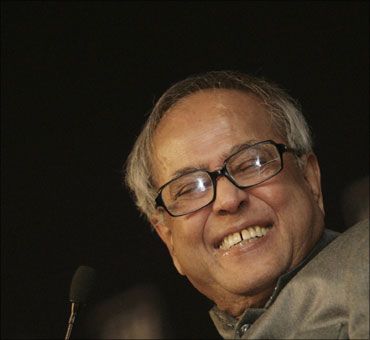

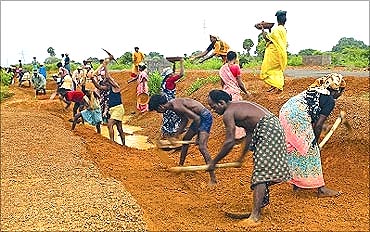
article